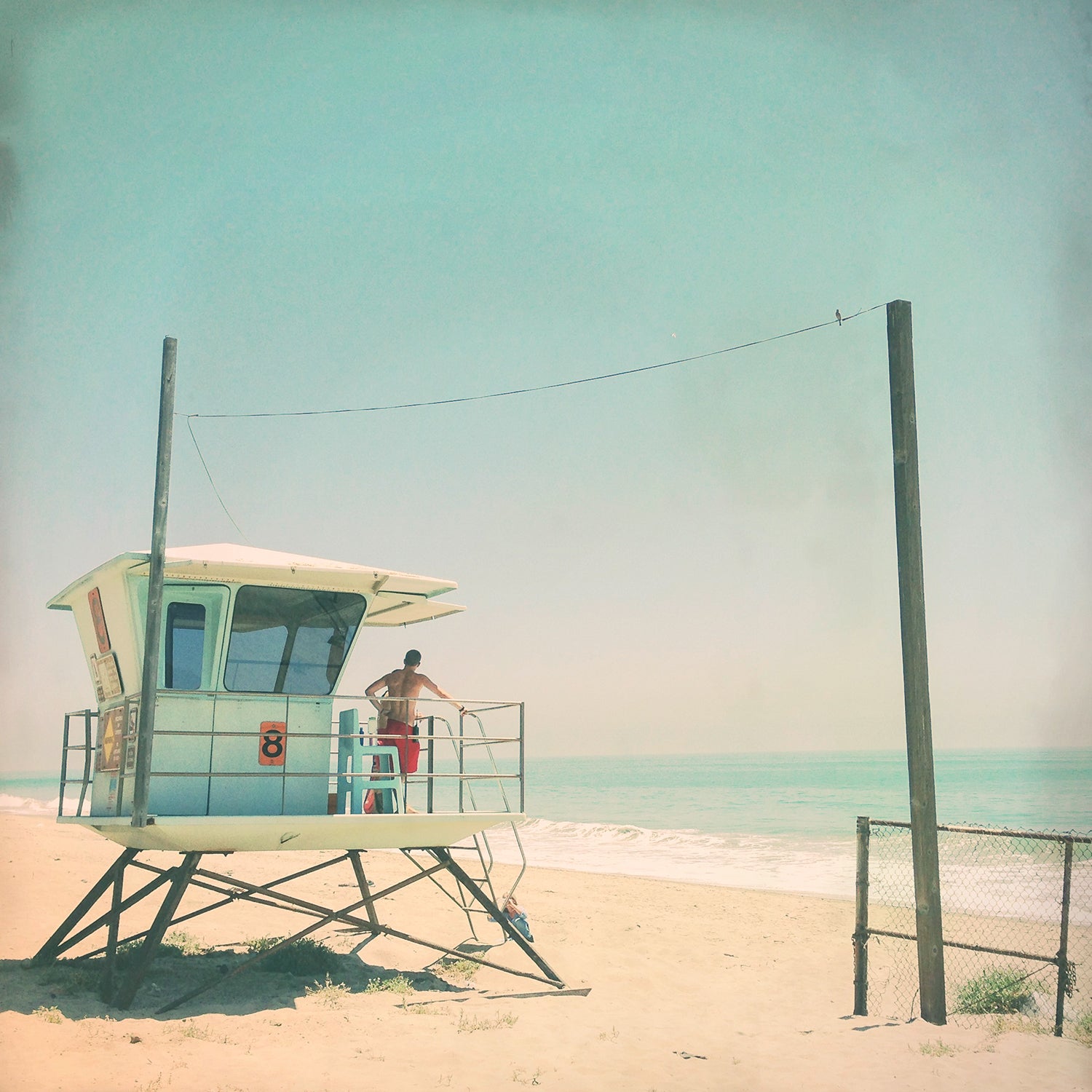I arrived early to set up the lifeguard tower at Sunset Beach, on Oahu’s North Shore. It was 1994, my first winter season as a lifeguard. I’d made a few mellow rescues but hadn’t been involved in anything serious yet. This morning, the waves were small and clean. The water was packed with bodies. But an offshore buoy had read 17 feet at 25 seconds overnight, which meant that, in a few hours, the surf would be huge.
North Shore lifeguards used to work in teams of two. My partner for the day, Roger Erickson, showed up and, without a word, walked past me up the stairs to the tower.
“Roger,” I said, “buoy number one really jumped last night. The waves are gonna get big quick.”
He turned around, put an imaginary phone to his ear, and said, “Hello? Buoy report?” then waved me off. He proceeded to organize his things.
It wouldn’t be a stretch to say I idolized Roger, but you never knew what kind of mood he was going to be in. He joined the Marines in 1966 and was shipped to Vietnam. Returning to Southern California, he fell in with some bikers and served ten months in prison for assaulting a police officer. Roger moved to Hawaii in the early 1970s and for the next three decades paddled into some of the biggest waves ever ridden on the North Shore. We sat in the tower without talking for 45 minutes.
“Roger,” I finally said, “I still haven’t had a legit rescue. Can I get the first one today?”
He scanned the lineup through his binoculars. “You can have every damn one of ’em,” he said.
We posted “high surf” signs in the sand while the new swell quickly filled in. Soon, a set caught everyone inside. Broken boards drifted aimlessly. A cluster of surfers bobbed in the channel. We stood in the tower assessing the damage. “Here you go,” said Roger. “Take your pick.”
I paddled the 11-foot rescue board out into the channel. Most people were doing OK, but one guy was struggling. I put him on my board, and we caught some whitewater to the beach. I filled out the required paperwork and climbed back up into the tower. Sunset Beach was now completely closed out. Waves with 30-foot faces were detonating on the reef. No one was in the water.
Roger scanned the ocean. “It’s not over,” he said, handing me the binos. A lone figure, about a half-mile out, was waving his arms in the air. I got butterflies.
Behind us, the traffic moving along the two-lane highway slowed to a stop. Hundreds of tourists gathered next to the tower. I stood in front of the giant shorepound, holding the rescue board upright in the sand. Sensing a lull, I ran into the water and started paddling. Almost instantly, a wave doubled up on the shallows, sucked me backwards over the falls, and sent me bouncing up the sand. I looked to the tower, where Roger was smiling and pumping his fists.
“That’s alright,” he yelled. “You got it!”
I waited for him to make the call.
“Go!” he yelled, pointing to the horizon. “Go! Go!”
I squeaked into what used to be the channel, dodging waves that seemed to come out of nowhere. Past the break zone, I found a scared teenager sitting on his board, drifting slowly toward Kauai. Mounds of whitewater obscured the beach a half-mile in.
I heard sirens racing away from us on the highway, which meant the jet ski was being hauled to Waimea for another rescue. We were on our own.
“We’re gonna have to ditch your board,” I said.
“I don’t care,” the kid said. We started paddling tandem toward the beach.
Taking a break, we sat up and watched the backs of giant peaks heave toward shore, the offshore spray casting rainbows around us. It was the type of day surfers dream about: waves as big as buildings, the sun sparkling. Then, as if the music suddenly stopped, I realized I didn’t have a plan. I had someone’s life in my hands, and there was a huge audience on the beach waiting for the outcome. But I was mostly concerned with Roger, watching from the tower.
“Listen,” I said with faked confidence, “when I say paddle, you paddle as hard as you can.” The kid nodded. I paddled us farther inside and let a few waves roll through.
“Paddle!” I yelled as another wave drew us up the face. As soon as it started to pitch, I sat up, dug my legs in, and let it pass beneath us.
“Paddle!” I yelled as the back of the wave pulled us forward. “Paddle!”
The next wave exploded behind us with a sharp, thunderous clap. I looked back. All I saw was whitewater. We were being thrashed violently in the froth. It took everything I had to keep us upright.
Finally, the wave shot us out across the flats. The kid still had his hands sealed in a death grip on the handles. We looked at each other with astonishment. I pushed him into a small wave, which he rode up the sand. The crowd cheered.
We sat beneath the tower and filled out the paperwork. “Brah,” he said, “you saved my life, you know. Thanks.”
I went into the tower and sat with Roger. He was scanning the horizon through his binos. There was a long, uncomfortable silence.
“Textbook,” he said quietly. “Textbook.”
Jeff Johnson is a photographer, director, and writer in Santa Barbara, California.


